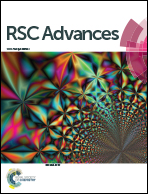Metastasis manners and the underlying mechanisms of ALK and ROS1 rearrangement lung cancer and current possible therapeutic strategies
Abstract
The rearrangements of anaplastic lymphoma kinase (ALK) and the c-ros oncogene 1 (ROS1) have both been important driving factors in non-small-cell lung cancer (NSCLC). They have already been defined in 3–5% of NSCLC patients. ALK and ROS1 rearrangements are associated with unique clinical and pathological features, especially patients are usually younger, with milder or never smoking history, and adenocarcinoma histology. Also, they have both been found to contribute to the metastasis of NSCLC by cell migration and invasion. It has recently been recognized that the brain can be considered as a primary site for metastasis in cancers with ALK or ROS1 rearrangements. The present review summarizes the current status of NSCLC metastasis and possible mechanisms based on available evidence, and then we list possible therapeutic strategies so that an increase in control of ALK and ROS1 rearrangement of NSCLC metastases by combination therapy can be translated in an increase in overall survival and prognosis.



 Please wait while we load your content...
Please wait while we load your content...